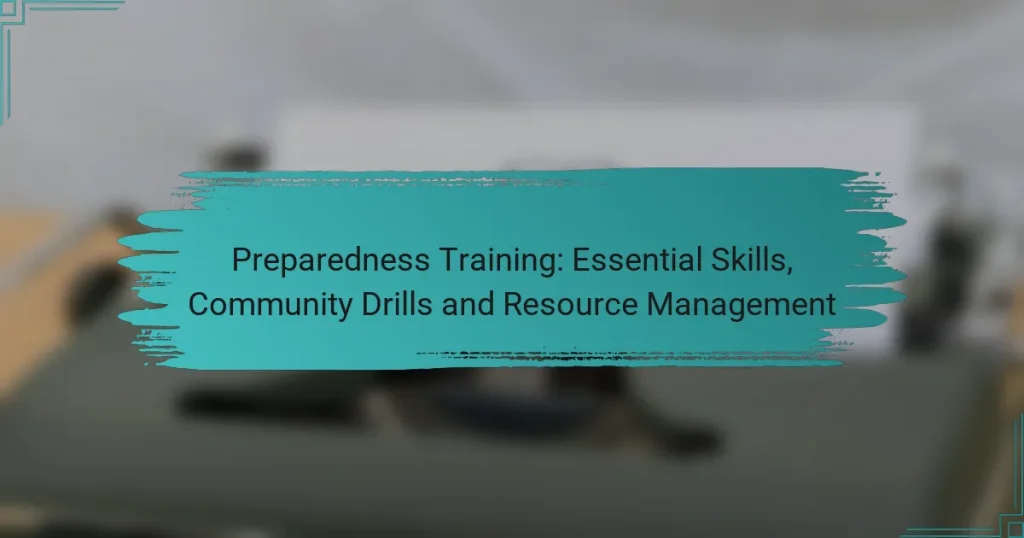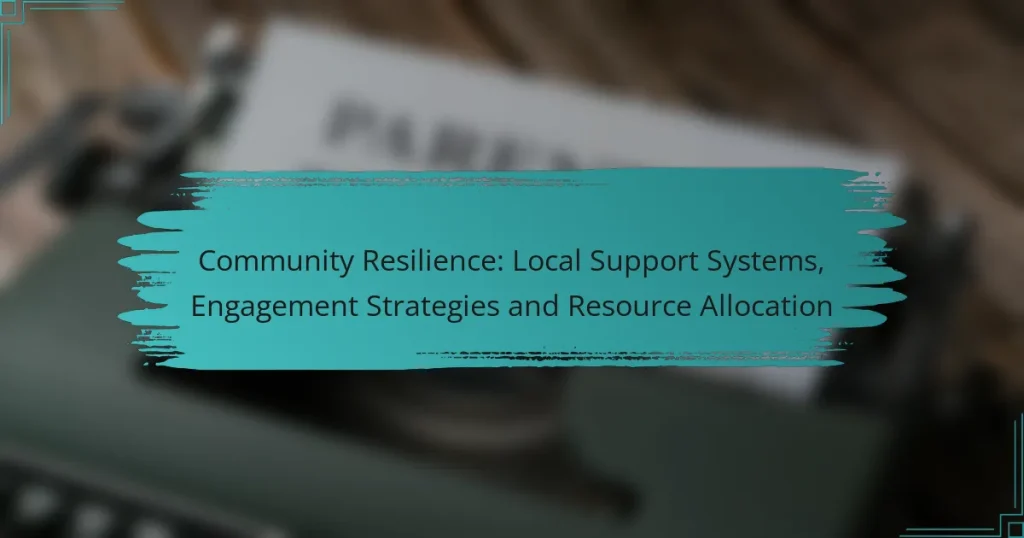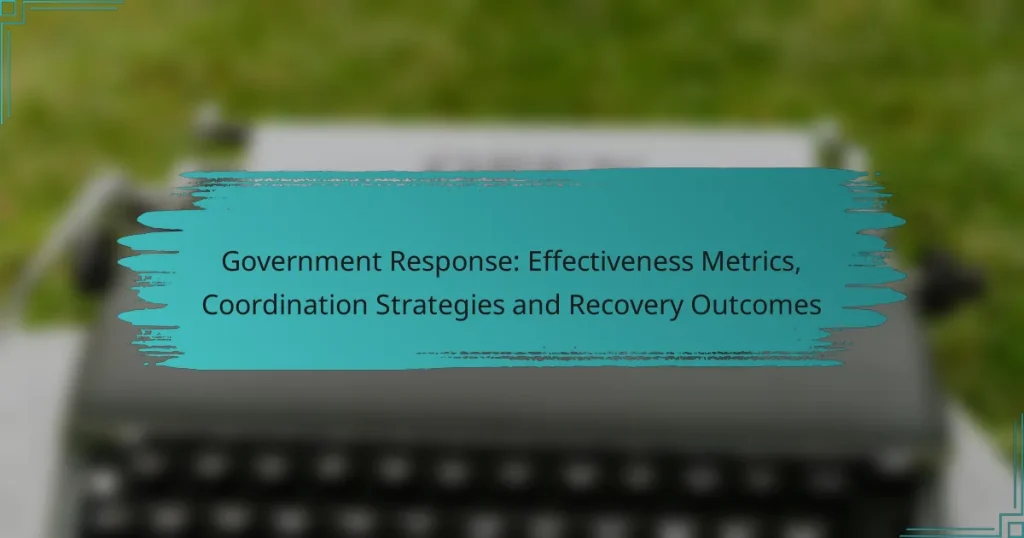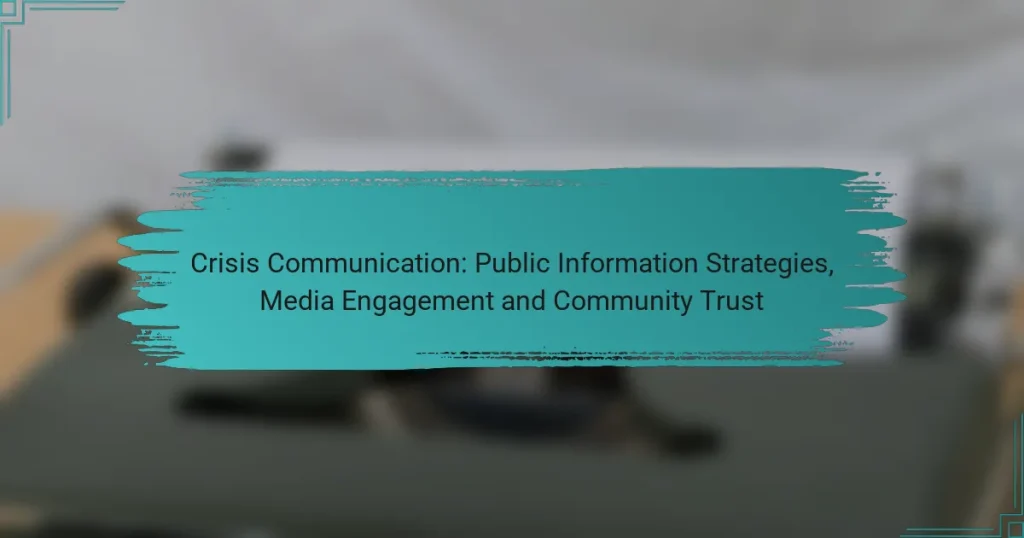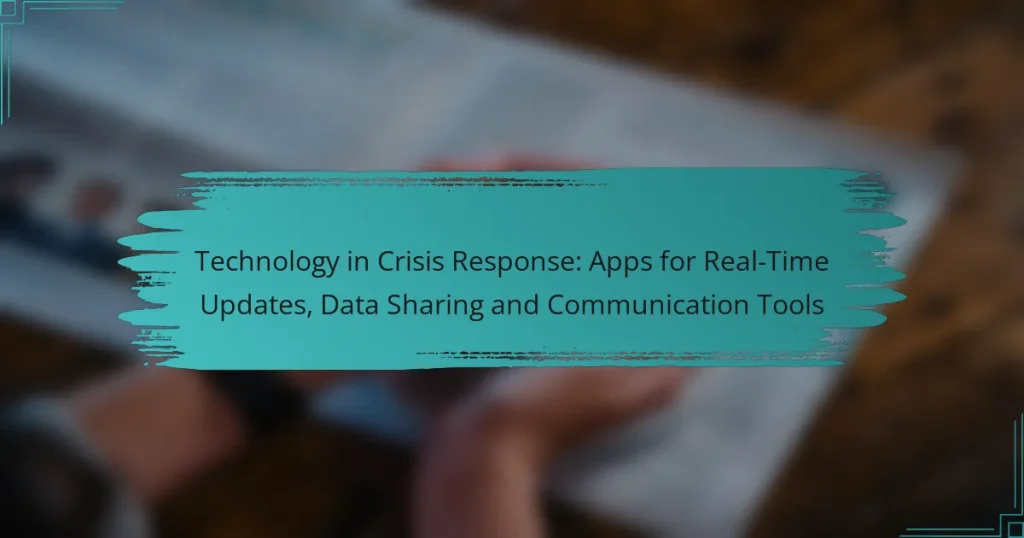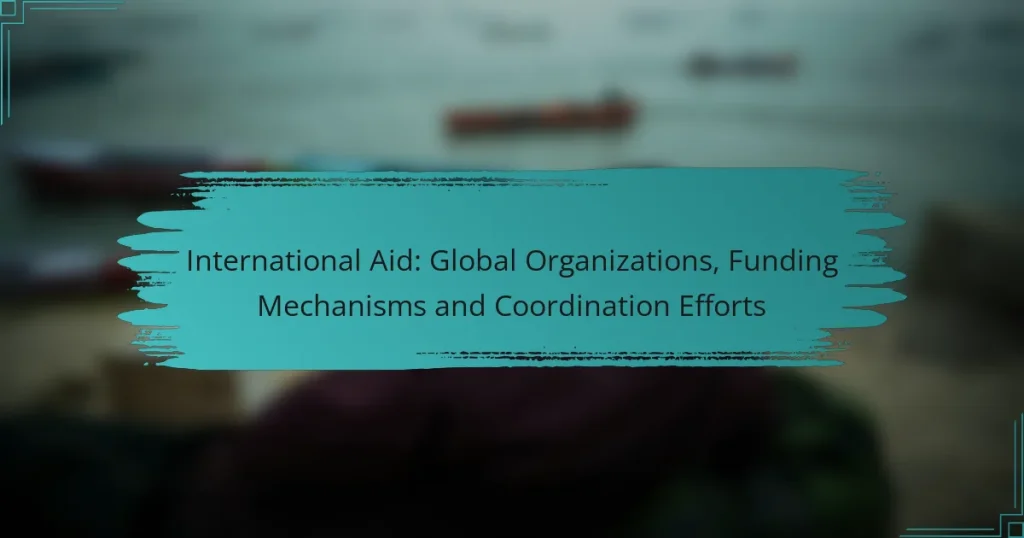Crisis response strategies are essential for organizations to effectively navigate emergencies while safeguarding their operations and reputation. By combining clear communication, stakeholder involvement, and resource management, organizations can prepare for potential threats and respond efficiently. The integration of technology further enhances these strategies, allowing for real-time assessment and informed decision-making during critical situations.
Community Resilience: Local Support Systems, Engagement Strategies and Resource Allocation
Government Response: Effectiveness Metrics, Coordination Strategies and Recovery Outcomes
Crisis Communication: Public Information Strategies, Media Engagement and Community Trust
NGO Involvement: Nonprofit Roles, Funding Sources and Impact Assessment
Technology in Crisis Response: Apps for Real-Time Updates, Data Sharing and Communication Tools
International Aid: Global Organizations, Funding Mechanisms and Coordination Efforts
What are effective crisis response strategies in South Africa?
Effective crisis response strategies in South Africa involve a combination of clear communication, stakeholder involvement, resource management, and training. These strategies help organizations navigate emergencies efficiently while minimizing impact on operations and reputation.
Emergency communication plans
Emergency communication plans are essential for conveying timely and accurate information during a crisis. These plans should outline key messages, communication channels, and designated spokespersons to ensure consistency and clarity.
In South Africa, utilizing multiple platforms such as social media, SMS alerts, and traditional media can enhance reach. Regular updates and transparent communication help build trust with the public and stakeholders.
Stakeholder engagement
Engaging stakeholders is crucial for effective crisis management. This includes identifying key partners, such as government agencies, NGOs, and community leaders, and establishing communication lines before a crisis occurs.
Regular meetings and collaborative planning sessions can foster relationships and ensure that all parties understand their roles during an emergency. This proactive approach can lead to quicker and more coordinated responses.
Resource allocation
Proper resource allocation is vital for addressing crises effectively. Organizations should assess their available resources, including personnel, finances, and equipment, and prioritize them based on the nature of the crisis.
In South Africa, it is important to have contingency funds and supplies readily available. Establishing partnerships with local suppliers can also ensure quick access to necessary resources during emergencies.
Training and simulations
Training and simulations prepare teams for real-life crisis scenarios. Regular drills can help identify weaknesses in response plans and improve team coordination under pressure.
Incorporating local context into training, such as understanding specific risks faced in South Africa, enhances relevance. Organizations should aim for at least one full-scale simulation per year to ensure readiness and adaptability.
How can organizations prepare for crises?
Organizations can prepare for crises by implementing comprehensive strategies that include risk assessment, training, and established response protocols. These measures help to identify potential threats, equip staff with necessary skills, and ensure a coordinated approach during emergencies.
Risk assessment frameworks
Risk assessment frameworks enable organizations to systematically identify, analyze, and prioritize potential risks. Common frameworks include the ISO 31000 and the COSO ERM, which guide organizations in evaluating both internal and external threats.
When utilizing a risk assessment framework, consider conducting regular reviews and updates to reflect changes in the operational environment. This ensures that the organization remains vigilant and responsive to emerging risks.
Crisis management training
Crisis management training prepares employees to effectively respond to emergencies. Training can include simulations, workshops, and tabletop exercises that mimic real-life scenarios, allowing staff to practice their roles in a controlled environment.
Organizations should aim to conduct crisis management training at least annually, ensuring that all employees are familiar with their responsibilities. Regular refreshers can help maintain readiness and improve response times during actual crises.
Developing response protocols
Developing response protocols involves creating clear, actionable plans that outline steps to take during a crisis. These protocols should detail communication strategies, roles and responsibilities, and resource allocation to ensure a swift and organized response.
It is crucial to involve key stakeholders in the development of these protocols and to test them through drills. This collaborative approach helps identify gaps and fosters a culture of preparedness within the organization.
What role does technology play in crisis response?
Technology plays a crucial role in crisis response by enabling faster communication, data analysis, and resource management. It helps organizations to assess situations in real-time, coordinate efforts effectively, and make informed decisions during emergencies.
Real-time data analytics
Real-time data analytics allows organizations to process large volumes of information quickly, providing insights that can guide crisis response efforts. By analyzing data from various sources, such as sensors, social media, and news outlets, teams can identify trends and make timely decisions.
For example, during a natural disaster, data analytics can help predict the movement of a storm or the impact of flooding, allowing responders to allocate resources more effectively. Utilizing platforms that offer real-time analytics can significantly enhance situational awareness.
Social media monitoring tools
Social media monitoring tools are essential for tracking public sentiment and gathering information during a crisis. These tools can analyze posts and comments across platforms to gauge the public’s concerns and reactions, which can inform response strategies.
For instance, organizations can use these tools to identify misinformation or rumors that may escalate a situation. By addressing these issues promptly, they can maintain public trust and ensure accurate information dissemination.
Crisis management software
Crisis management software streamlines communication and coordination among team members during an emergency. This type of software typically includes features for task assignment, incident tracking, and reporting, which help ensure that everyone is aligned and informed.
When selecting crisis management software, consider user-friendliness and integration capabilities with existing systems. Effective software can reduce response times and improve overall efficiency, making it a vital tool for any organization preparing for potential crises.
What are common challenges in crisis response?
Common challenges in crisis response include communication breakdowns, resource limitations, and managing public perception. Addressing these issues effectively is crucial for minimizing the impact of a crisis and ensuring a swift recovery.
Communication breakdowns
Communication breakdowns can severely hinder crisis response efforts. Miscommunication or lack of information can lead to confusion among team members and stakeholders, resulting in delayed actions and ineffective responses.
To mitigate communication issues, establish clear channels and protocols for information sharing. Regular updates and briefings can help ensure everyone is on the same page, reducing the risk of misunderstandings.
Resource limitations
Resource limitations often pose significant challenges during a crisis. Organizations may face shortages of personnel, equipment, or financial resources, which can impede their ability to respond effectively.
To address resource constraints, prioritize critical needs and allocate available resources strategically. Consider forming partnerships with other organizations to share resources and expertise, which can enhance overall response capabilities.
Public perception management
Managing public perception is essential during a crisis, as negative perceptions can escalate the situation and damage reputations. Effective communication strategies are vital to maintaining trust and transparency with the public.
Develop a proactive communication plan that addresses potential concerns and provides timely updates. Engaging with the media and using social media platforms can help shape public perception positively and keep stakeholders informed throughout the crisis. Regularly assess public sentiment to adjust messaging as needed.
How can organizations evaluate their crisis response?
Organizations can evaluate their crisis response by conducting thorough assessments of their actions, communication, and outcomes during the crisis. This evaluation helps identify strengths and weaknesses, informing future strategies and improving overall readiness.
Post-crisis analysis
Post-crisis analysis involves reviewing the organization’s response after a crisis has occurred. This process typically includes gathering data on the effectiveness of communication, resource allocation, and decision-making during the event. Engaging stakeholders in this analysis can provide diverse perspectives and insights.
Key steps in post-crisis analysis include documenting the timeline of events, assessing the impact on stakeholders, and evaluating the adequacy of the response plan. Organizations should focus on both quantitative metrics, such as response times and resource usage, and qualitative feedback from team members and affected parties.
Common pitfalls to avoid during post-crisis analysis include rushing the evaluation process and neglecting to involve all relevant stakeholders. It is crucial to create a culture of openness where team members feel safe to share their experiences and suggestions for improvement. A structured checklist can help ensure all aspects of the response are covered:
Document the crisis timeline and decisions made
Gather feedback from team members and stakeholders
Assess the effectiveness of communication strategies
Identify resource allocation and management issues
Develop recommendations for future responses
